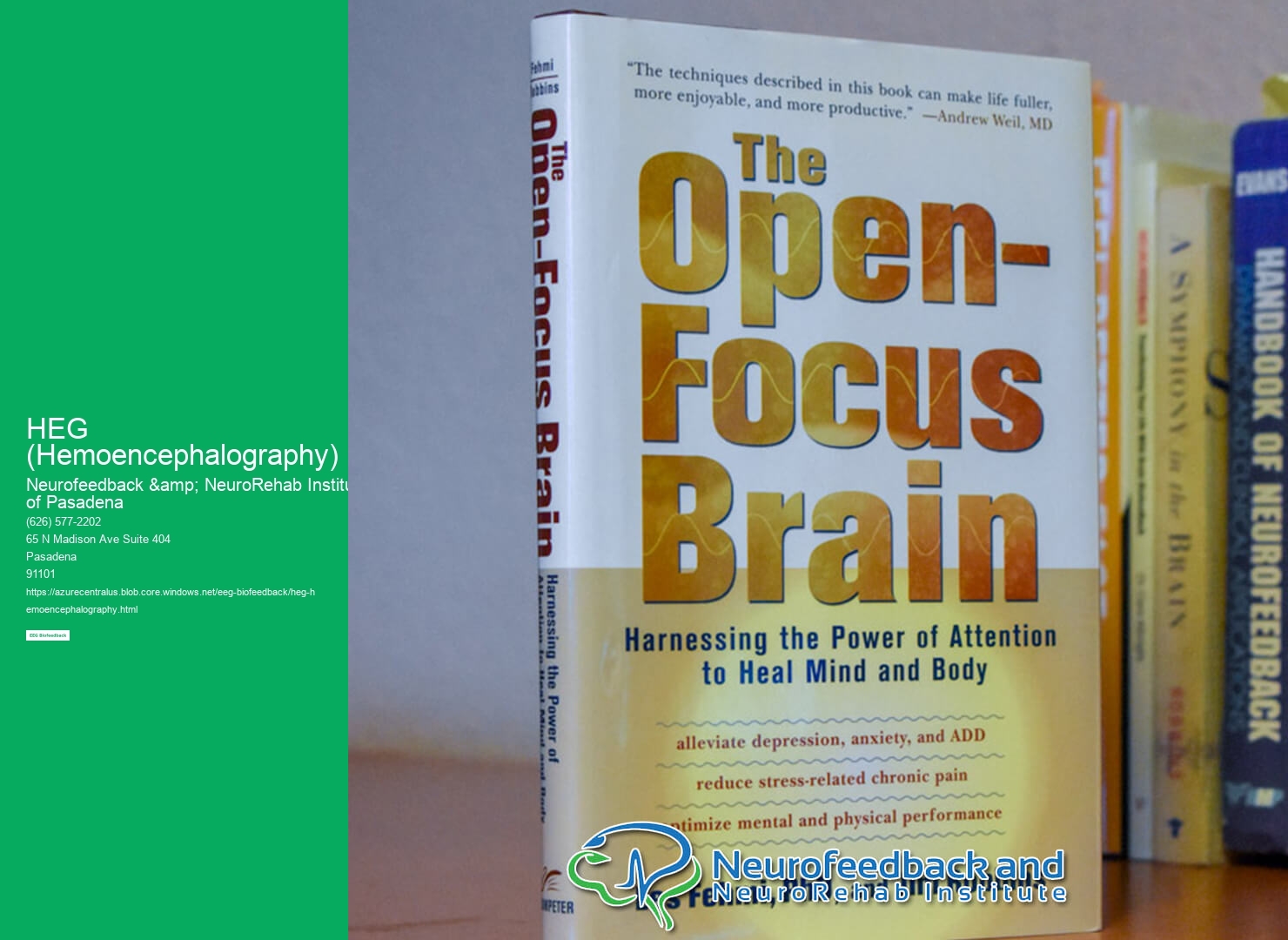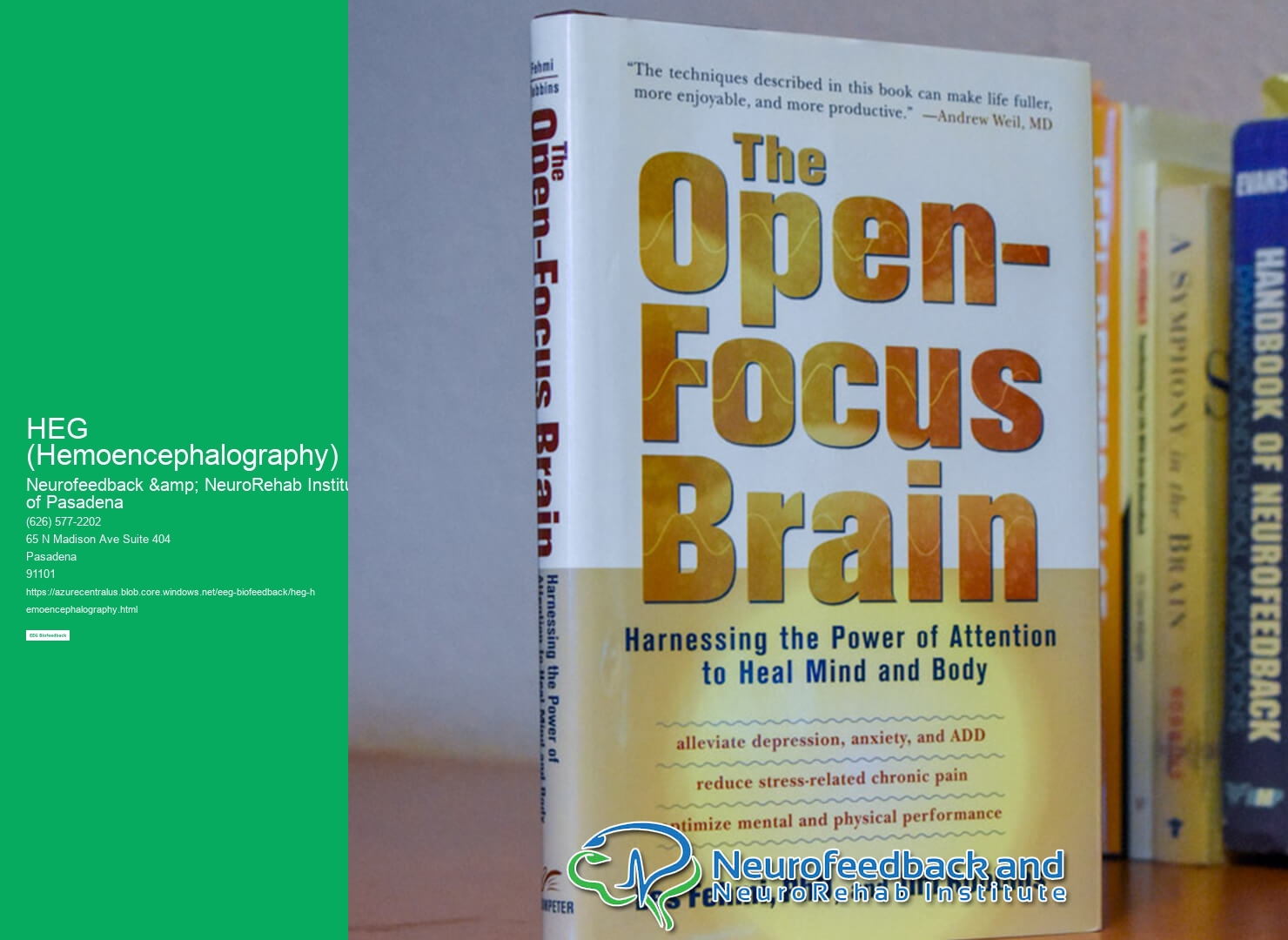

Hemoencephalography (HEG) is a neuroimaging technique that measures changes in blood flow and oxygenation in the brain. It works by using near-infrared light to detect changes in the concentration of oxygenated and deoxygenated hemoglobin in the blood vessels of the brain. This information is then used to create a map of brain activity. HEG is based on the principle that when brain activity increases, blood flow to that area of the brain also increases, resulting in an increase in oxygenated hemoglobin and a decrease in deoxygenated hemoglobin. By measuring these changes, HEG can provide insights into brain function and activity.
HEG has several applications in the field of neuroscience. One of the main applications is in the assessment and treatment of attention deficit hyperactivity disorder (ADHD). HEG can be used to measure changes in brain activity associated with attention and focus, allowing clinicians to monitor and train individuals with ADHD to improve their attention skills. HEG is also used in research to study brain function and cognition, as well as in neurofeedback training to enhance brain performance. Additionally, HEG has been explored as a potential tool for assessing and treating other neurological conditions such as traumatic brain injury and stroke.
HEG differs from other brain imaging techniques such as functional magnetic resonance imaging (fMRI) and electroencephalography (EEG) in several ways. Unlike fMRI, which measures changes in blood oxygenation indirectly through the magnetic properties of hemoglobin, HEG directly measures changes in the concentration of oxygenated and deoxygenated hemoglobin. This allows for a more direct and real-time assessment of brain activity. HEG also differs from EEG, which measures electrical activity in the brain, as it provides information about blood flow and oxygenation rather than electrical signals. Additionally, HEG is portable and non-invasive, making it more accessible and suitable for certain applications.

HEG can be used to diagnose and monitor specific neurological conditions, particularly those related to attention and focus. For example, in the assessment of ADHD, HEG can provide objective measures of brain activity associated with attention and focus, helping clinicians make more accurate diagnoses and track treatment progress. HEG has also shown promise in the assessment and treatment of other conditions such as traumatic brain injury and stroke, where monitoring changes in brain activity and blood flow can be crucial for guiding rehabilitation efforts.
HEG is generally considered safe and non-invasive, with minimal risks or side effects. The use of near-infrared light in HEG is considered safe for the brain and does not involve exposure to ionizing radiation. However, as with any medical procedure, there may be some potential risks or discomfort associated with the use of HEG, such as skin irritation from the sensors or temporary headaches. It is important for trained professionals to administer and interpret HEG results to ensure its safe and effective use.


HEG has some limitations in terms of spatial and temporal resolution. In terms of spatial resolution, HEG provides a broad overview of brain activity rather than precise localization of activity to specific brain regions. This is because the near-infrared light used in HEG can penetrate several centimeters into the brain, making it difficult to pinpoint activity to specific areas. In terms of temporal resolution, HEG provides a relatively slow measure of brain activity compared to techniques like EEG, which can capture rapid changes in electrical activity. However, advancements in technology and data analysis techniques are continually improving the spatial and temporal resolution of HEG.
HEG is being used in research to advance our understanding of brain function and cognition. By measuring changes in blood flow and oxygenation, HEG can provide insights into how different brain regions are involved in various cognitive processes such as attention, memory, and decision-making. Researchers are also using HEG to study the effects of interventions such as neurofeedback training on brain activity and performance. Additionally, HEG is being used in clinical research to explore its potential as a diagnostic and monitoring tool for various neurological conditions. Overall, HEG is contributing to our knowledge of the brain and helping to develop new approaches for assessing and treating neurological disorders.

Phase synchrony analysis plays a crucial role in enhancing our understanding of brainwave patterns in EEG biofeedback. By examining the synchronization of oscillatory activity across different brain regions, phase synchrony analysis allows researchers to identify and quantify the coordination and communication between these regions. This analysis provides valuable insights into the functional connectivity of the brain and helps uncover the underlying mechanisms of EEG biofeedback. By studying the phase synchrony patterns, researchers can identify specific brain networks that are involved in the regulation of brainwave activity and determine how these networks are affected by biofeedback interventions. This knowledge can then be used to optimize EEG biofeedback protocols and improve their effectiveness in treating various neurological and psychiatric conditions. Additionally, phase synchrony analysis can also help identify biomarkers or signatures of specific brain states or disorders, further contributing to our understanding of brainwave patterns in EEG biofeedback.
Cognitive enhancement goals in EEG biofeedback differ from therapeutic goals in terms of their specific objectives and outcomes. While therapeutic goals focus on addressing and alleviating specific cognitive or emotional dysfunctions, cognitive enhancement goals aim to optimize and improve overall cognitive functioning and performance. Therapeutic goals typically involve targeting specific symptoms or conditions such as attention deficit hyperactivity disorder (ADHD), anxiety, or depression, and aim to reduce or manage these symptoms. In contrast, cognitive enhancement goals aim to enhance cognitive abilities such as attention, memory, and executive functioning, regardless of the presence of any specific dysfunction. The focus of cognitive enhancement is on optimizing cognitive performance and achieving peak mental states, rather than solely addressing deficits or dysfunctions.
Gender-specific considerations may play a role in EEG biofeedback protocols. Research suggests that there may be differences in brain activity and response to biofeedback between males and females. For example, studies have shown that females tend to have higher levels of alpha brain waves, which are associated with relaxation and calmness, compared to males. This may influence the selection of specific protocols or the interpretation of EEG data in biofeedback training. Additionally, hormonal fluctuations throughout the menstrual cycle may impact brain activity and response to biofeedback, further highlighting the importance of considering gender-specific factors in EEG biofeedback protocols.
Personalized neurofeedback protocols are developed for individual clients through a comprehensive assessment process that takes into account their unique needs, goals, and brainwave patterns. This process typically involves an initial intake session where the client's history, symptoms, and objectives are discussed in detail. Following this, a thorough evaluation of the client's brainwave activity is conducted using advanced neurofeedback technology. This evaluation helps identify any specific areas of dysregulation or imbalance in the client's brainwaves. Based on the assessment findings, the neurofeedback practitioner then designs a customized protocol that targets these specific areas of concern. This protocol may involve a combination of neurofeedback training sessions, cognitive exercises, and lifestyle recommendations tailored to the individual client's needs. Throughout the course of the neurofeedback training, the protocol is continuously adjusted and refined based on the client's progress and feedback, ensuring that it remains personalized and effective.
EEG biofeedback, also known as neurofeedback, has shown promise as a potential preventive measure for cognitive decline in aging populations. By providing real-time information about brain activity, individuals can learn to self-regulate their brainwaves and improve cognitive functioning. Research has indicated that neurofeedback training can enhance attention, memory, and executive functions, which are often affected by cognitive decline. Additionally, neurofeedback has been found to promote neuroplasticity, the brain's ability to reorganize and form new connections, which is crucial for maintaining cognitive health. While further research is needed to fully understand the long-term effects of EEG biofeedback on cognitive decline, early studies suggest that it holds promise as a non-invasive and personalized approach to preserving cognitive function in aging populations.
EEG biofeedback, also known as neurofeedback, has been found to have a positive impact on sleep patterns and quality. This non-invasive technique involves monitoring and training brainwave activity using an electroencephalogram (EEG). By providing real-time feedback on brainwave patterns, individuals can learn to self-regulate their brain activity and achieve a more balanced state. Research has shown that EEG biofeedback can help improve sleep latency, reduce the number of awakenings during the night, and increase overall sleep efficiency. It has also been found to be effective in addressing sleep disorders such as insomnia and sleep apnea. Additionally, EEG biofeedback has been shown to enhance the quality of sleep by promoting deeper, more restorative sleep stages and reducing the occurrence of sleep disturbances. Overall, EEG biofeedback offers a promising approach to improving sleep patterns and quality by targeting the underlying brainwave activity.